Madrid is Spain's capital and largest city, with 3.3 million citizens. 6.5 million people live in the autonomous community of the same name (Comunidad de Madrid). The city has an impressive cultural and architectural heritage, which includes grand avenues, plazas, buildings and monuments, and world-class art galleries and museums. Madrid is also renowned for gastronomic delights and nightlife lasting up until dawn.
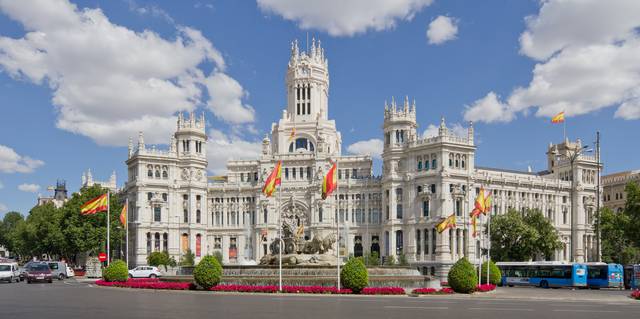
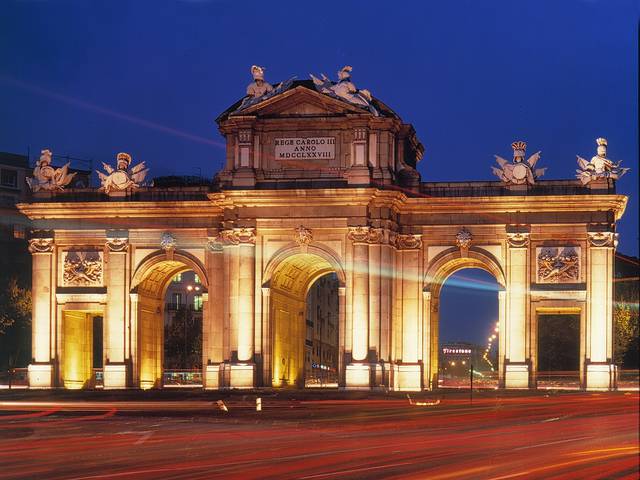 Madrid is just northeast of the geographical center of the Iberian Peninsula, in the middle of the Spanish central Castillian plateau (Meseta central), at an average altitude of . Nearly all of the most famous tourist areas are in the center of the city including Puerta del Sol, Plaza Mayor, Palacio Real, and Plaza de Colón. The major streets in Madrid include the Gran Via, Alcalá Street, and Paseo de la Castellana.
Madrid is just northeast of the geographical center of the Iberian Peninsula, in the middle of the Spanish central Castillian plateau (Meseta central), at an average altitude of . Nearly all of the most famous tourist areas are in the center of the city including Puerta del Sol, Plaza Mayor, Palacio Real, and Plaza de Colón. The major streets in Madrid include the Gran Via, Alcalá Street, and Paseo de la Castellana.
The climate of Madrid is continental; mainly dry and quite extreme at times. Madrid sees perpetual sunshine and a characteristically hot and dry summer, and a fairly cold winter with frequent frosts during the night and the occasional snowfall. Spring and autumn are mild with the most rainfall concentrated in these seasons. Spring and autumn are definitely the best times to visit, especially the months of April, May, June, September and October. There is very little rainfall during summer and also less rainfall during winter. During winter snow occurs sporadically; however, snowfall usually lasts only for a few days, but there is abundant snowfall in the adjacent mountain ranges nearby.
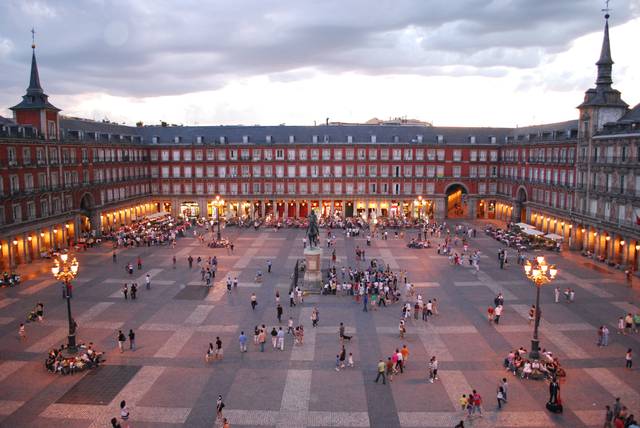
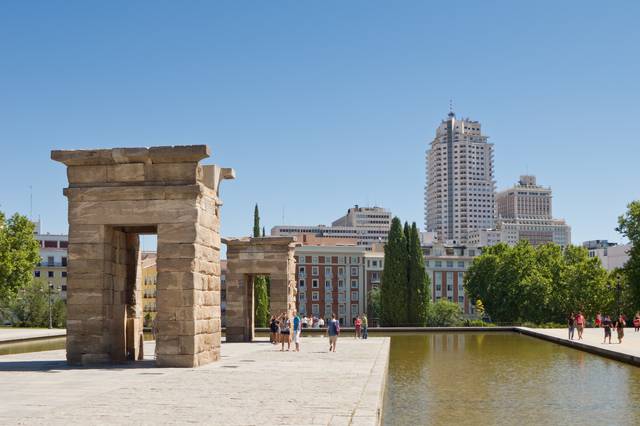 Madrid is a city that goes back to the Spanish Muslims, but virtually nothing of Madrid before the Reconquista is left. A few historic city walls have been archeologically preserved but Madrid was by far overshadowed by Toledo (Roman Toletum) until the early modern era. To give just one example, construction on Madrid Cathedral did not start until the late 19th century (and construction only finished in the 1990s) as the archbishop of Toledo did not want to relinquish episcopal power.
Madrid is a city that goes back to the Spanish Muslims, but virtually nothing of Madrid before the Reconquista is left. A few historic city walls have been archeologically preserved but Madrid was by far overshadowed by Toledo (Roman Toletum) until the early modern era. To give just one example, construction on Madrid Cathedral did not start until the late 19th century (and construction only finished in the 1990s) as the archbishop of Toledo did not want to relinquish episcopal power.
The culture of Madrid was dominated by its royal history, centre of the Spanish Empire. The Royal Palace, big plazas and buildings used by the Spanish Monarchy, enormous cathedrals and churches are plentiful in Madrid. Madrid is now just as much a cosmopolitan city as Berlin or London: full of modern architecture, lifestyle and culture.
Madrid became capital of Spain under Phillip II (Felipe II in Spanish) who had a gargantuan palace built in nearby El Escorial. For a long while, Madrid would be the royal residence first, and a city only later. Madrid architecture often reflects the era in which it was built. The Spanish Habsburgs ("Los Austrias") who reigned until the death of unfortunate Charles II in 1700 predominantly used red brick for facades and black schist for the roofs. The later Bourbon dynasty (ruling today after the two Republican interludes) preferred granite to brick, giving their buildings a grayer tone. The king that had the largest influence on Madrid after Felipe II was perhaps Carlos III. He was nicknamed "el Rey Alcalde" (the mayor-king) or "Madrid's best mayor" due to his extensive building and modernization programs in the city. Other royal projects that left their mark are Isabel II's freshwater canal, and the metro which was started in 1919 with King Alfonso XIII's own money. However, both those monarchs were so unpopular that they were later overthrown by their own people, giving rise to the First and Second Spanish Republics.
Being the capital of Spain, Madrid came to be associated - justly or not - with the governing trends in Spain by Spaniards in other parts of the country. As the governing trends swung widely from anti-clerical Republic to hyper-catholic fascist Franco dictatorship, this has influenced the perception of Madrid in the rest of Spain. During the 2nd Republic (1931-1936), it was a bustling city of new ideas with many political issues of the day literally fought out on the streets of Madrid. During the Civil War, Madrid endured a three year siege (1936-1939) by the anti-Republican troops and was one of the last places to hold out for the Republic. During the dictatorship of Francisco Franco (1939-1975), the city represented the heart of the repressive hyper-conservative dictatorship to many Spaniards, particularly Basques and Catalans. However, the city is also the epicentre of the famous Movida of the 1980s, a Spanish movement that bred personalities such as the director Pedro Almodóvar. The heritage of this era is indeed still visible in the city center, where a party can be found at all times and one of the most liberal and colourful environments of Spain can be seen. The city is also known for its acceptance of LGBT people. Madrid's city politics have swung widely from right to left and back since the death of Franco, at first having a PSOE led government through the eighties which was replaced by the center-right PP which dominated the city through corruption and paternalistic public works in the 1990s only to give rise to ex-communist Manuela Carmena in the 2010s (after the corruption came to light with several high ranking Madrid PP members ending up in jail) who was replaced (despite her personal popularity) by a coalition including the neo-Franquist VOX party after the 2019 elections
A massive expansion of the Madrid Metro network began in the mid-1990s and only slowed down by the 2008/2009 economic crisis. It has given the city an urban transit system with few equals in the world. The city which for centuries could not compete with other European capitals has become a quite vibrant and cosmopolitan place with immigrants from Latin America, Arab countries, other parts of Europe, and the Iberian peninsula.
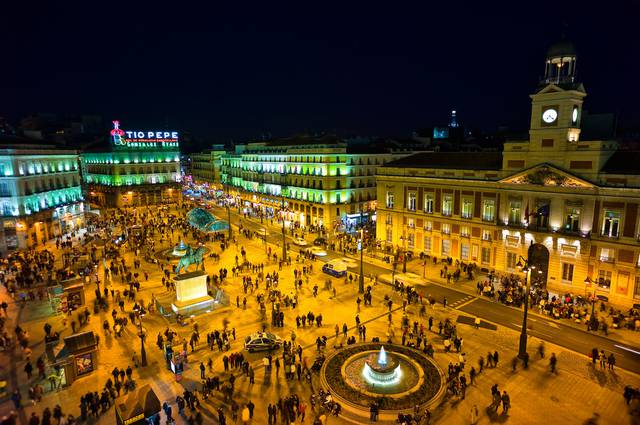 The citizens of Madrid refer to themselves as Madrileños or the more traditional and now seldom-used term "gatos" (cats). They live by a daily routine that is heavily influenced by the climate. Due to the typically midday heat during summer, a "siesta" can be still observed during which some citizens take a break to cool off, though Madrileños can usually only afford this 'luxury' during holidays and weekends.
The citizens of Madrid refer to themselves as Madrileños or the more traditional and now seldom-used term "gatos" (cats). They live by a daily routine that is heavily influenced by the climate. Due to the typically midday heat during summer, a "siesta" can be still observed during which some citizens take a break to cool off, though Madrileños can usually only afford this 'luxury' during holidays and weekends.
Most stores are open throughout the day; just small stores are often closed during siesta. Workers and those more afflicted by Western lifestyles choose not to observe this long break and work usually between 09:00 and 18:00-19:00. However, during summer, many offices have a summer schedule requiring workers to start at 08:00 and finish at 15:00 (most commonly without the standard 1-2 hour break for lunch).
Offices usually close during the weekend but businesses are often open Saturday morning (downtown stays open until afternoon). Most grocers are closed on Sundays, but some major chain and department stores linked to "culture" (books, music, etc.) will be open throughout the day and all of them on the first Sunday of the month. Shops and department stores in Puerta del Sol area are open every day.
Madrid has a very modern and elaborate transportation network of buses and Metro with a few "Light Metro" tram lines in the outskirts. The city contrasts with some large European cities in that it is extremely clean, and city employees in bright yellow vests can almost always be seen cleaning the streets and sidewalks. Like most large cities, however, there is a substantial population of vagrants and beggars lining the streets.
Madrid is one of the biggest and most cosmopolitan cities in Europe. Communities of West Africans, North Africans, other Europeans, Chinese, Indians, Filipinos, Pakistanis and (especially) Latin Americans are prominent.
Madrid possibly has the most bars per capita of any European city and a very active nightlife; Madrileños are known to stay up until as late as 05:00-07:00. It is quite common to see a crowded Gran Vía on weekend nights. Due to this lifestyle, lodging near the fun areas may end up a nightmare for light sleepers if your window faces the street.
Madrid is one of the top addresses in the world for art, both contemporary and not-so-contemporary, with Goya's most famous works in the Prado, Picasso's Guernica in the Reina Sofía and countless other works in those two museums and the Thyssen-Bornemisza Museum. Besides art, Madrid also boasts some impressive architecture courtesy of kings who had access to the wealth of two continents and no qualms in spending it for extravagant royal residences.
The following is a non-exclusive taste of what Madrid can provide to a traveler. Dive into the districts to find more!
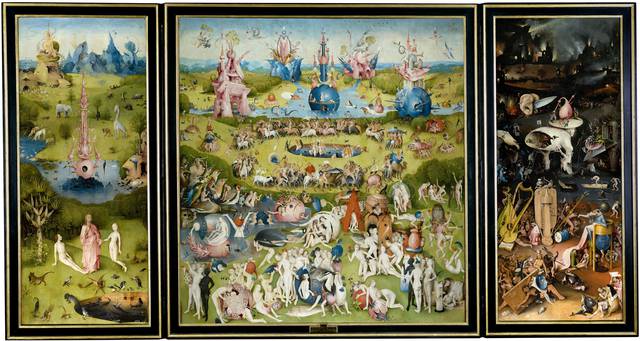
- Museum Triangle.. This is Madrid's museum district, named for the three major art museums clustered along Paseo del Prado east of the old city: the Museo del Prado, one of the finest art museums in the world, the Thyssen-Bornemisza, a baron's collection of classical art, and the Reina Sofia, Madrid's modern art museum. However, a couple of smaller museums also occupy the neighborhood which are well worth seeing as well.
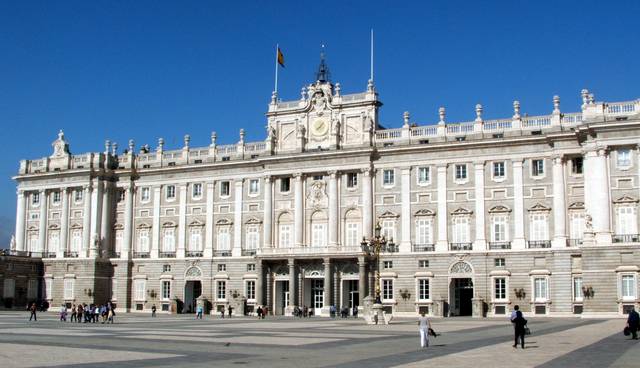
- Royal Palace.. An enormous palace, one of the biggest in Europe, with scorching plains of concrete around it. Though it is the official residence of the King of Spain, the royal family does not actually reside here and it is generally used only for state ceremonies. The Royal Palace is considered to be one of the most emblematic and beautiful buildings in Madrid.
- Plaza Mayor.. Perhaps the best known plaza in Madrid, this impressive square is now one of the main stops on any tourist visit.
- Puerta del Sol.. This plaza is the heart of Madrid and one of the busiest places in the city – a hub for the local transit system, a favorite meeting spot for locals, a visible area for festivals or political demonstrations, and an opportune location for tour guides, street performers, pickpockets and anyone else looking to take advantage of all the tourists on-hand. Several of Madrid's landmarks are found here: the statue of the Bear and the Strawberry Tree, the main Post Office with its iconic clock tower and Kilometre Zero of the Spanish road network.
- Gran Vía.. One of the busiest avenues in Madrid, the location of the cinema district and a number of shopping malls and is lined with large billboards and lights.
- Plaza de Cibeles.. Large roundabout in the city centre with the neoclassical Cybele Fountain and the imposing eclectic Cybele Palace (former Palace of Comunications, now seat of the municipal government).
- Mercado de San Miguel.. Sets the ambience of a traditional market, with the advantages of the new times. It has an iron and glass structure from the 20th century.
_02-RKhhh.medium.jpg)
- Catedral de la Almudena.. The main church of Spanish Catholicism, in neo-Gothic style. Built from the 19th century to the 1990s.
- Plaza de España.. A prominent square adjacent to two of the tallest buildings in Madrid: the Torre de Madrid and the Edificio España.
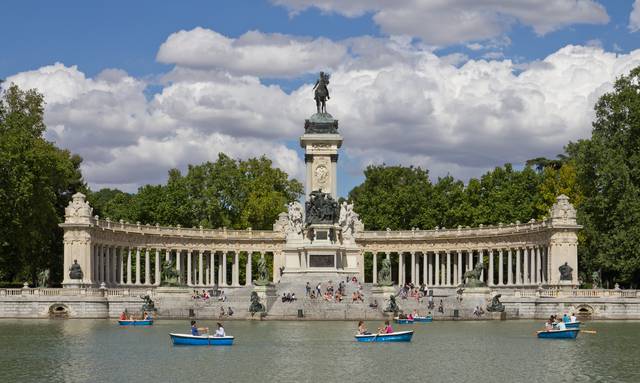
- Parque del Retiro.. The main park of Madrid, the perfect place to take a rest during a sunny day, or take part in the drum circles around the statue of Alphonso XII on summer evenings.
- Templo de Debod.. Ancient Egyptian temple that was moved to Madrid's Parque del Oeste (Western Park) after the construction of the Aswan High Dam.
Museum Triangle.. This is Madrid's museum district, named for the three major art museums clustered along Paseo del Prado east of the old city: the Museo del Prado, one of the finest art museums in the world, the Thyssen-Bornemisza, a baron's collection of classical art, and the Reina Sofia, Madrid's modern art museum. However, a couple of smaller museums also occupy the neighborhood which are well worth seeing as well.
Royal Palace.. An enormous palace, one of the biggest in Europe, with scorching plains of concrete around it. Though it is the official residence of the King of Spain, the royal family does not actually reside here and it is generally used only for state ceremonies. The Royal Palace is considered to be one of the most emblematic and beautiful buildings in Madrid.
Plaza Mayor.. Perhaps the best known plaza in Madrid, this impressive square is now one of the main stops on any tourist visit.
Puerta del Sol.. This plaza is the heart of Madrid and one of the busiest places in the city – a hub for the local transit system, a favorite meeting spot for locals, a visible area for festivals or political demonstrations, and an opportune location for tour guides, street performers, pickpockets and anyone else looking to take advantage of all the tourists on-hand. Several of Madrid's landmarks are found here: the statue of the Bear and the Strawberry Tree, the main Post Office with its iconic clock tower and Kilometre Zero of the Spanish road network.
Gran Vía.. One of the busiest avenues in Madrid, the location of the cinema district and a number of shopping malls and is lined with large billboards and lights.
Plaza de Cibeles.. Large roundabout in the city centre with the neoclassical Cybele Fountain and the imposing eclectic Cybele Palace (former Palace of Comunications, now seat of the municipal government).
Mercado de San Miguel.. Sets the ambience of a traditional market, with the advantages of the new times. It has an iron and glass structure from the 20th century.
Catedral de la Almudena.. The main church of Spanish Catholicism, in neo-Gothic style. Built from the 19th century to the 1990s.
Plaza de España.. A prominent square adjacent to two of the tallest buildings in Madrid: the Torre de Madrid and the Edificio España.
Parque del Retiro.. The main park of Madrid, the perfect place to take a rest during a sunny day, or take part in the drum circles around the statue of Alphonso XII on summer evenings.
Templo de Debod.. Ancient Egyptian temple that was moved to Madrid's Parque del Oeste (Western Park) after the construction of the Aswan High Dam.
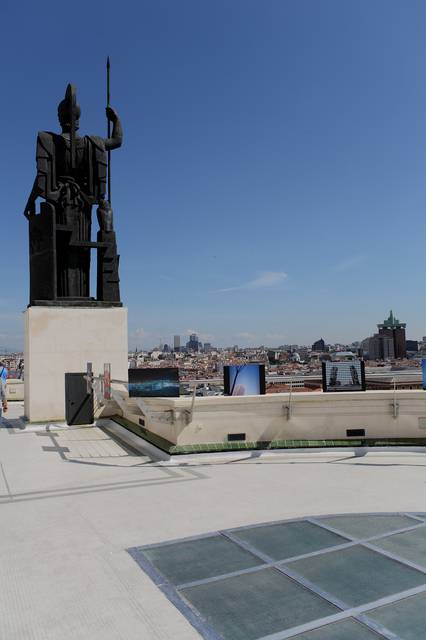
The most known football clubs of Madrid include Real Madrid and Atlético de Madrid - their home stadiums can be found in the Northern Suburbs. Other teams include Rayo Vallecano, in the neighbourhood of Vallecas or Getafe in the nearby suburb served by Madrid Metro.
There are also major Basketball teams: Estudiantes, Real Madrid, and Fuenlabrada. The first two play at the Palacio de los Deportes (commercially known as Barclaycard Center) every other weekend during the season. Fuenlabrada, based in the Madrid suburb of the same name, play at Polideportivo Fernando Martín.
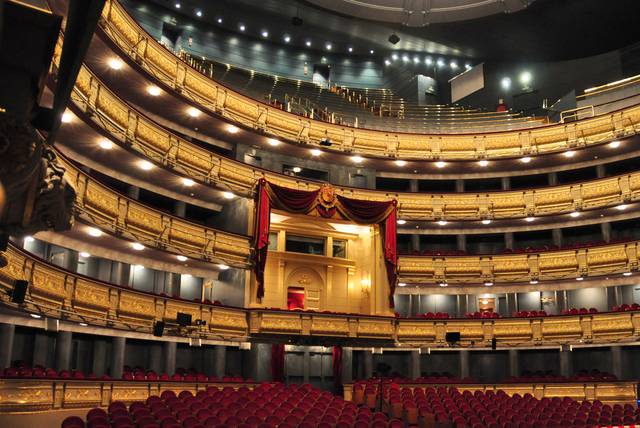 Flamenco shows can be seen in numerous venues in Sol-Letras-Lavapiés, Moncloa and La Latina - Austrias.
Flamenco shows can be seen in numerous venues in Sol-Letras-Lavapiés, Moncloa and La Latina - Austrias.
Opera houses are spread through the city center. In addition, several orchestras don't have a stable/home venue to play in:
- Orquesta Nacional de España, +34 902 224 949 (tickets). Tickets are sold at ticket offices in the Auditorio Nacional de Música, Teatro María Guerrero, Teatro de la Zarzuela, Teatro de la Comedia, and Teatro Valle-Inclán.
- Orquesta Sinfónica de Madrid, C/ Barquillo, 8, +34 915 321 503.
- Orquesta de la Comunidad de Madrid, C/ Mar Caspio, 4, +34 913 820 680.
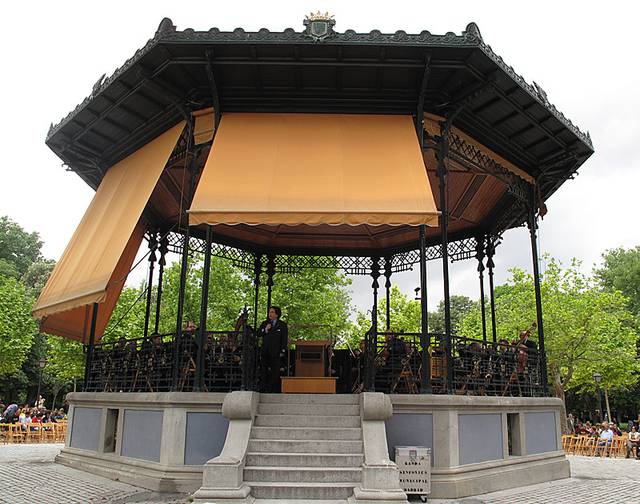
- Banda Sinfónica Municipal de Madrid, +34 915 267 147, +34 915 267 158 (M-F 08:00-15:00). Performs in El Retiro Park in the summer. Tickets can be purchased at the Teatro Monumental (listed above) and at the tourist information centre in Plaza Mayor, as well as online. €5 (adults), €3 (seniors/youth/children).
There are a number of cinemas offering American and British films in English (along with films in other languages). These original films are denoted in the listings by a designation of "V.O." which stands for versión original. Cinemas in Madrid will sometimes have días del espectador (viewer days) with cheaper ticket prices, usually on Mondays or Wednesdays. Some of the V.O. theaters to check out are:
Orquesta Nacional de España, +34 902 224 949 (tickets). Tickets are sold at ticket offices in the Auditorio Nacional de Música, Teatro María Guerrero, Teatro de la Zarzuela, Teatro de la Comedia, and Teatro Valle-Inclán.
Orquesta Sinfónica de Madrid, C/ Barquillo, 8, +34 915 321 503.
Orquesta de la Comunidad de Madrid, C/ Mar Caspio, 4, +34 913 820 680.
Banda Sinfónica Municipal de Madrid, +34 915 267 147, +34 915 267 158 (M-F 08:00-15:00). Performs in [[Madrid/Retiro-Paseo_del_Arte#Parque del Retiro|El Retiro Park]] in the summer. Tickets can be purchased at the Teatro Monumental (listed above) and at the tourist information centre in Plaza Mayor, as well as online. €5 (adults), €3 (seniors/youth/children).
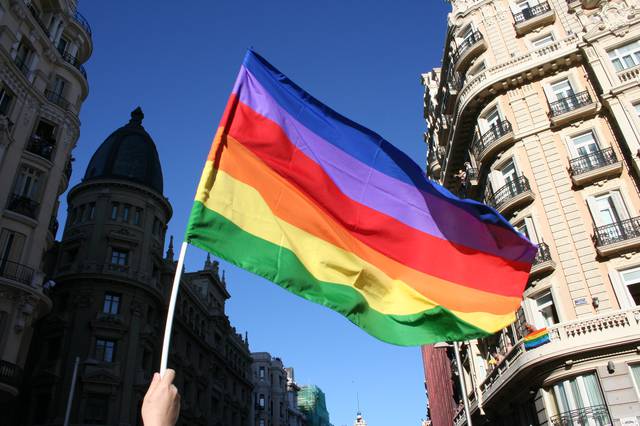
- La Transhumancia. Annual event during which the center of Madrid is free of cars and is instead filled with shepherds exercising their ancient right to drive sheep and livestock through the city.
- Madrid Gay Pride. Annual event held between the last week of June and the first of July, with more than 1.5 million people in the street from all around the world. It began as a weekend party, but lately turned into a full week extravaganza.
La Transhumancia. Annual event during which the center of Madrid is free of cars and is instead filled with shepherds exercising their ancient right to drive sheep and livestock through the city.
Madrid Gay Pride. Annual event held between the last week of June and the first of July, with more than 1.5 million people in the street from all around the world. It began as a weekend party, but lately turned into a full week extravaganza.
_04-FHcUz.medium.jpg) Major credit cards and foreign bank cards are accepted in most stores, but it is common practice to be asked for photo-ID (DNI). If asked for your DNI present your passport, residency permit or foreign ID card — anything with your photo and name on it will be accepted by most shopkeepers. The signatures on credit cards are usually not checked.
Major credit cards and foreign bank cards are accepted in most stores, but it is common practice to be asked for photo-ID (DNI). If asked for your DNI present your passport, residency permit or foreign ID card — anything with your photo and name on it will be accepted by most shopkeepers. The signatures on credit cards are usually not checked.
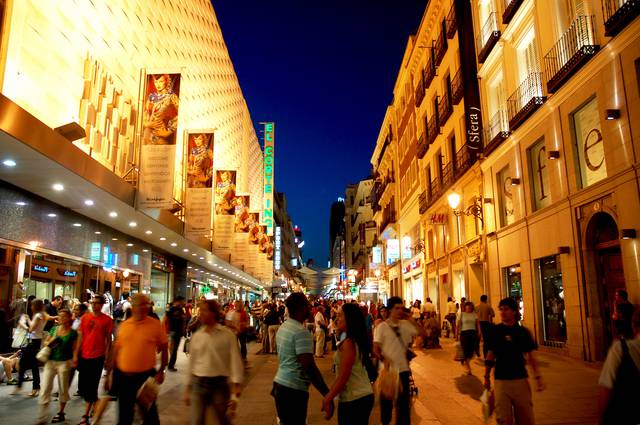
In addition to the shopping areas below, there are also a lot of H&M, Zara, Mango, and Blanco stores all over Madrid, with high fashion clothes and accessories at a low price.
- Sol area. The most convenient area for tourists is around Calle de Preciados and Calle del Carmen, between metro stations Sol and Gran Vía, home to the El Corte Inglés department store, high-street names like Zara, Gran Vía 32, H&M, Sephora, Pimkie.
- Salamanca. The most upscale shopping district is northeast of the center, around Calle Serrano and its side-streets. Top designer names like Chanel, Versace, Hermès, Hugo Boss, Louis Vuitton, Emporio Armani and Dolce & Gabbana, including the fluid fabrics and elegant cuts of Spanish designer Adolfo Domínguez, are on Calle Ortega y Gasset. Head for Calle Serrano for Purificación García, Roberto Verino, Ermenegildo Zegna, Loewe, Carolina Herrera, Manolo Blahnik, Cartier, and Yves Saint Laurent. Prada is on Goya street, and on Jorge Juan St you can find even more luxury shops.
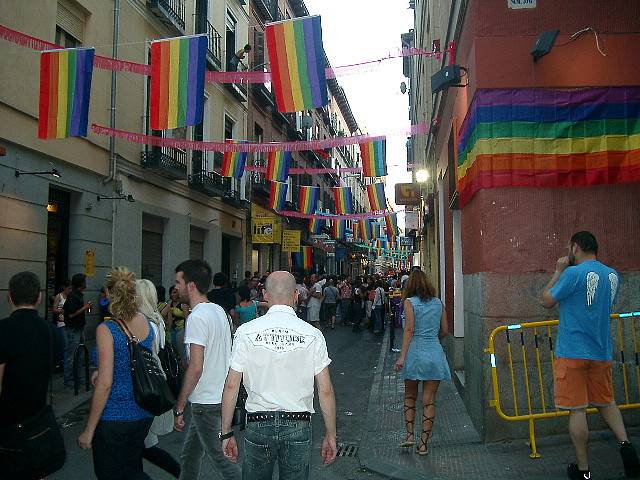
- Chueca and Calle Fuencarral area. This part of the city used to be an abandoned and marginal area. However, it has quickly turned into the most avant-garde and modern part of Madrid. Thanks to the gay community, old shops were taken over and turned into the coolest places of Madrid. Today it is an example of modernity, a paradise for entertainment where everything is possible. The streets are filled with restaurants, alternative cafés and shops, a good example is the Market of Fuencarral (Mercado de Fuencarral, in Spanish) a novel shopping center concept. Apart from the purely commercial, this area proposes a wide range of gastronomy and party clubs by night in the weekends.
Sol area. The most convenient area for tourists is around Calle de Preciados and Calle del Carmen, between metro stations Sol and Gran Vía, home to the El Corte Inglés department store, high-street names like Zara, Gran Vía 32, H&M, Sephora, Pimkie.
Salamanca. The most upscale shopping district is northeast of the center, around Calle Serrano and its side-streets. Top designer names like Chanel, Versace, Hermès, Hugo Boss, Louis Vuitton, Emporio Armani and Dolce & Gabbana, including the fluid fabrics and elegant cuts of Spanish designer Adolfo Domínguez, are on Calle Ortega y Gasset. Head for Calle Serrano for Purificación García, Roberto Verino, Ermenegildo Zegna, Loewe, Carolina Herrera, Manolo Blahnik, Cartier, and Yves Saint Laurent. Prada is on Goya street, and on Jorge Juan St you can find even more luxury shops.
Chueca and Calle Fuencarral area. This part of the city used to be an abandoned and marginal area. However, it has quickly turned into the most avant-garde and modern part of Madrid. Thanks to the gay community, old shops were taken over and turned into the coolest places of Madrid. Today it is an example of modernity, a paradise for entertainment where everything is possible. The streets are filled with restaurants, alternative cafés and shops, a good example is the Market of Fuencarral (Mercado de Fuencarral, in Spanish) a novel shopping center concept. Apart from the purely commercial, this area proposes a wide range of gastronomy and party clubs by night in the weekends.
_02-rvBhd.medium.jpg) El Corte Inglés is a Spanish institution, the only remaining department store chain in the country. El Corte Inglés stores are ubiquitous and dominate the retail market, setting the tone and reflecting the preferences of the Spanish customers. While hardly as exciting as visiting the over-the-top luxury department stores in New York or London, they provide a nice shopping environment, and many feature nice (and reasonably priced) gastronomic options. So, if the weather is bad, one of their stores may be your last resort.
El Corte Inglés is a Spanish institution, the only remaining department store chain in the country. El Corte Inglés stores are ubiquitous and dominate the retail market, setting the tone and reflecting the preferences of the Spanish customers. While hardly as exciting as visiting the over-the-top luxury department stores in New York or London, they provide a nice shopping environment, and many feature nice (and reasonably priced) gastronomic options. So, if the weather is bad, one of their stores may be your last resort.
Some of the more prominent El Corte Inglés locations in Madrid:
- El Corte Inglés Preciados, C/ Preciados 1-9, +34 913 798 000. Occupying the full first few blocks of the pedestrian boulevard Calle Preciados, El Corte Inglés serves as a gateway to the shopping paradise from Puerta de Sol.
- El Corte Inglés Plaza de Callao, Plaza de Callao, 2, +34 913 798 000. M-Sa 10:00-22:00, Su 11:00-21:00. A much smaller store is to be found at the other end of Calle Preciados. Not quite a looker from the outside, it holds a top-floor restaurant with brilliant views over the Gran Vía.
You will also find stores in Centro Comercial Serrano., Centro Comercial Goya. and Centro Comercial Princesa., as well as in most shopping centres on the outskirts of Madrid.
El Corte Inglés Preciados, C/ Preciados 1-9, +34 913 798 000. Occupying the full first few blocks of the pedestrian boulevard Calle Preciados, El Corte Inglés serves as a gateway to the shopping paradise from Puerta de Sol.
El Corte Inglés Plaza de Callao, Plaza de Callao, 2, +34 913 798 000. M-Sa 10:00-22:00, Su 11:00-21:00. A much smaller store is to be found at the other end of Calle Preciados. Not quite a looker from the outside, it holds a top-floor restaurant with brilliant views over the Gran Vía.
You will also find stores in Centro Comercial Serrano., Centro Comercial Goya. and Centro Comercial Princesa., as well as in most shopping centres on the outskirts of Madrid.
You will also find stores in Centro Comercial Serrano., Centro Comercial Goya. and Centro Comercial Princesa., as well as in most shopping centres on the outskirts of Madrid.
You will also find stores in Centro Comercial Serrano., Centro Comercial Goya. and Centro Comercial Princesa., as well as in most shopping centres on the outskirts of Madrid.
Loewe is one of the world's oldest luxury brands, founded back in the middle of the 19th century in Madrid. You will find their flagship stores Loewe Flores. and Casa Loewe Madrid. around the intersection of Calle Serrano and Calle de Goya, Loewe Gran Vía. on Gran Vía, and, if you forgot something, two at the Madrid-Barajas Airport, in T1 and T4.
Loewe is one of the world's oldest luxury brands, founded back in the middle of the 19th century in Madrid. You will find their flagship stores Loewe Flores. and Casa Loewe Madrid. around the intersection of Calle Serrano and Calle de Goya, Loewe Gran Vía. on Gran Vía, and, if you forgot something, two at the [[Adolfo Suárez Madrid–Barajas Airport|Madrid-Barajas Airport]], in T1 and T4.
Loewe is one of the world's oldest luxury brands, founded back in the middle of the 19th century in Madrid. You will find their flagship stores Loewe Flores. and Casa Loewe Madrid. around the intersection of Calle Serrano and Calle de Goya, Loewe Gran Vía. on Gran Vía, and, if you forgot something, two at the [[Adolfo Suárez Madrid–Barajas Airport|Madrid-Barajas Airport]], in T1 and T4.
Loewe is one of the world's oldest luxury brands, founded back in the middle of the 19th century in Madrid. You will find their flagship stores Loewe Flores. and Casa Loewe Madrid. around the intersection of Calle Serrano and Calle de Goya, Loewe Gran Vía. on Gran Vía, and, if you forgot something, two at the [[Adolfo Suárez Madrid–Barajas Airport|Madrid-Barajas Airport]], in T1 and T4.
_7-lOCAj.medium.jpg) Interesting markets can be found in the La Latina - Austrias and Retiro - Paseo del Arte districts
Interesting markets can be found in the La Latina - Austrias and Retiro - Paseo del Arte districts
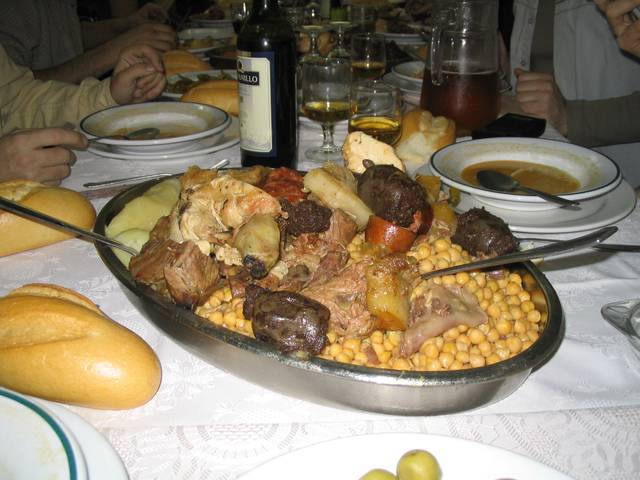 Dishes popular throughout Spain are also widely served in Madrid.
Dishes popular throughout Spain are also widely served in Madrid.
In addition, Madrid has a number of typical regional dishes:
- Gallinejas and entresijos – Lamb chitterlings fried in its fat. Very traditional and typical from Madrid city.
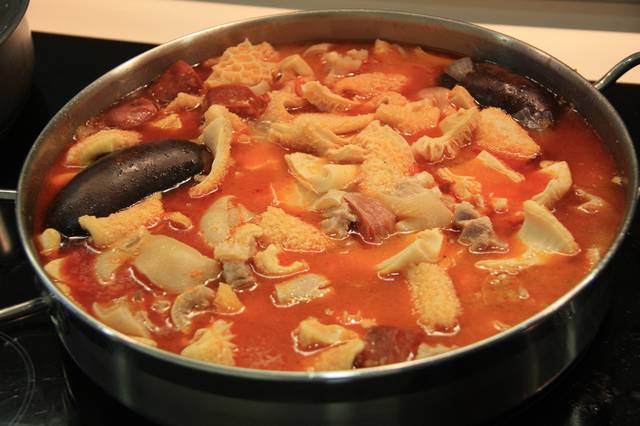
- Callos a la madrileña – A hot pot of spicy beef tripe similar to those found in Turkey and the Balkans.
- Cocido madrileño – Chickpea stew with meat and vegetables. The particularity of this stew is the way it is served. The soup, chickpeas and meat are served and eaten separately.
- Oreja de cerdo – Pigs ears, fried in garlic. This popular dish is widely eaten throughout central Spain.
- Sopa de ajo – Garlic soup is a rich and oily soup which generally includes paprika, grated Spanish ham, fried bread and a poached egg. A variation of this soup is known as sopa castellana.
It is ironic that Madrid, in the centre of Spain, has higher quality seafood than most coastal regions. This quality comes at a price, and most Spaniards only occasionally shell out for a mariscada (Spanish for 'seafood feast'). Experiencing Madrid's seafood may be, for the visitor, an experience which will be worth the cost.
Meat and meat products (jamón iberico, morcilla, chorizo etc.) are of generally a very high quality in Spain and particularly in Madrid.
Gallinejas and entresijos – Lamb chitterlings fried in its fat. Very traditional and typical from Madrid city.
Callos a la madrileña – A hot pot of spicy beef tripe similar to those found in [[Turkey]] and the Balkans.
Cocido madrileño – Chickpea stew with meat and vegetables. The particularity of this stew is the way it is served. The soup, chickpeas and meat are served and eaten separately.
Oreja de cerdo – Pigs ears, fried in garlic. This popular dish is widely eaten throughout central Spain.
Sopa de ajo – Garlic soup is a rich and oily soup which generally includes paprika, grated Spanish ham, fried bread and a poached egg. A variation of this soup is known as sopa castellana.
Many of the restaurants and cervecerías in the Sol and Plaza Mayor area have generic poster board advertisements on the sidewalks with pictures advertising various paella dishes. These paellas are usually of bad quality and should be avoided. If you are looking for good, authentic Spanish paella, it is usually best to find a more expensive, 'sit-down' type of restaurant that offers a variety of paella dishes.
A much better option is the La Latina neighborhood just south of Plaza Mayor, especially along Calle Cava Baja. There are also a number of deli-like shops along Calle Arenal that offer food para llevar (for take away).
At bars, one generally orders various sized plates, a ración meaning a full dish, a media ración or a half-dish, or a smaller version which would be a tapa, a pinxto or a pincho.
The Spaniards don't eat lunch until 14:00 or 15:00, and dinner doesn't start until 21:00 or 22:00. As a rule of thumb, restaurants serve lunch from 13:00 (earlier in tourist zones) until 15:30, then close and re-open for dinner at 20:00, serving until 23:00. This schedule is usually for restaurants, since bars and mesones are usually opened all day long offering a wide variety of "tapas" and bocadillos (rolls) for a cheap price. If you're really desperate, the standard bunch of fast food chains do stay open throughout the day.
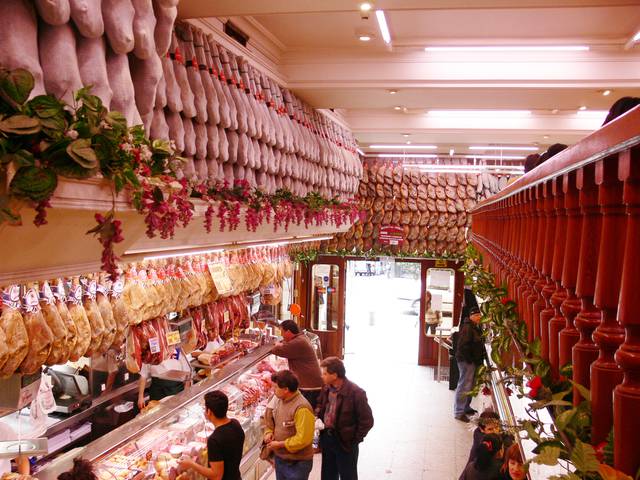
In the tapas bars, you should get free food with your drinks. The highest concentration of tapas bars is in La Latina and around Plaza Santa Ana in the barrio de las Letras, but you will find them all over the city, including Malasaña and Chueca as well as the western districts, where there are probably less overrun by tourists.
- Calle Cava Baja. This narrow street in La Latina is by far the most famous and popular place for tapas.
Calle Cava Baja. This narrow street in La Latina is by far the most famous and popular place for tapas.
Cafés and confectioneries can be found all over the city, but the highest concentration can be found around Puerta del Sol, barrio de las Austrias and Lavapiés, in the Old town and in Malasaña and Chueca. A very popular and typical local sweet is Churros, a fried-dough pastry (distantly related to doughnuts, but in a more elongated shape and a lot crispier), drizzled with sugar or chocolate, that is sold both in cafés and by street vendors.
_13-wAyhy.medium.jpg) Nightlife starts later in Madrid, with most people heading to the bars at 22:00-23:00. One of the best options to enjoy the nightlife is in the popular quarter Barrio de las Letras, especially on its main street, Calle Huertas, and other nearby streets. A great choice of bars is also available in the more traditional La Latina area as well as in the younger and alternative-flavoured Malasaña and Chueca districts.
Nightlife starts later in Madrid, with most people heading to the bars at 22:00-23:00. One of the best options to enjoy the nightlife is in the popular quarter Barrio de las Letras, especially on its main street, Calle Huertas, and other nearby streets. A great choice of bars is also available in the more traditional La Latina area as well as in the younger and alternative-flavoured Malasaña and Chueca districts.
Draught beer (cerveza) is usually ordered in cañas (200 ml), but may also come in dobles (400 ml) or jarras (mugs).
Clubs generally open at about midnight. If you go in any earlier you may find it quite empty. Many clubs do not close until 06:00, and even then everyone is still full of life.
- Alonso Martínez - Many pubs and small discos. Until about 03:00, a very young crowd, and if you′re around here before midnight, and over the age of 20, prepare to feel positively old. Most places close around 03:00, then people move to nearby areas to continue partying (clubs in Gran Vía or Tribunal).
- Chueca - Near Malasaña and Gran Vía, it is known as the gay district (which does not mean that straight people must feel excluded). Pop and electronic music. By far, the most cosmopolitan place in town. Has become quite chic and expensive.
- Tribunal/Malasaña - Alternative area. Mainly rock and pop music clubs, some of them still open from "La movida madrileña" (beginning of 1980s). Calle Manuela Malasaña is a great place to eat, Calle del Pez a great place to have some drinks and Plaza Dos de Mayo is the heart of the district.
- Gran Vía - "The place that never sleeps". Major street that includes many popular nightclubs, usually open from 01:00 to 06:00-07:00.
- La Latina - Near Lavapiés, it is the place to go for tapas and full of bohemian young people looking for stylish bars. In the old section are many small bars and pubs catering to people in their late 20s and 30s). Multiple bars serving fantastic tapas in the Cava Baja and Cuchilleros.
- Lavapiés - Multicultural quarter of the city, with more than 50% foreign residents, mostly from Africa, Asia and Latin America. Plenty of world music bars. Lavapiés is maybe the most cosmopolitan and hippy area at the same time in Madrid.
- Moncloa/Ciudad Universitaria - Due to its proximity to Universidad Complutense, Moncloa is associated with students and a student lifestyle, with many cheap bars and discos. Some of the places are best avoided. There are a few cheap bars with great nightlife starting from Thursdays directly in the Ciudad Universitaria near the major student dorms.
- Torre Europa - There used to be several posh pubs and clubs under the tower across from the stadium. There are four or five bars and discos in the avenida de Brazil area catering to a young and student crowd.
[[Madrid/Malasaña-Chueca#Drink|Alonso Martínez]] - Many pubs and small discos. Until about 03:00, a very young crowd, and if you′re around here before midnight, and over the age of 20, prepare to feel positively old. Most places close around 03:00, then people move to nearby areas to continue partying (clubs in Gran Vía or Tribunal).
[[Madrid/Malasaña-Chueca#Drink|Chueca]] - Near Malasaña and Gran Vía, it is known as the gay district (which does not mean that straight people must feel excluded). Pop and electronic music. By far, the most cosmopolitan place in town. Has become quite chic and expensive.
[[Madrid/Malasaña-Chueca#Drink|Tribunal/Malasaña]] - Alternative area. Mainly rock and pop music clubs, some of them still open from "La movida madrileña" (beginning of 1980s). Calle Manuela Malasaña is a great place to eat, Calle del Pez a great place to have some drinks and Plaza Dos de Mayo is the heart of the district.
[[Madrid/Sol-Letras-Lavapiés#Drink|Gran Vía]] - "The place that never sleeps". Major street that includes many popular nightclubs, usually open from 01:00 to 06:00-07:00.
[[Madrid/La Latina-Austrias#Drink|La Latina]] - Near Lavapiés, it is the place to go for tapas and full of bohemian young people looking for stylish bars. In the old section are many small bars and pubs catering to people in their late 20s and 30s). Multiple bars serving fantastic tapas in the Cava Baja and Cuchilleros.
[[Madrid/Sol-Letras-Lavapiés#Drink|Lavapiés]] - Multicultural quarter of the city, with more than 50% foreign residents, mostly from Africa, Asia and Latin America. Plenty of world music bars. Lavapiés is maybe the most cosmopolitan and hippy area at the same time in Madrid.
[[Madrid/Moncloa#Drink|Moncloa/Ciudad Universitaria]] - Due to its proximity to Universidad Complutense, Moncloa is associated with students and a student lifestyle, with many cheap bars and discos. Some of the places are best avoided. There are a few cheap bars with great nightlife starting from Thursdays directly in the Ciudad Universitaria near the major student dorms.
[[Madrid/Chamberí-Castellana#Drink|Torre Europa]] - There used to be several posh pubs and clubs under the tower across from the stadium. There are four or five bars and discos in the avenida de Brazil area catering to a young and student crowd.
"Locutorios" (call shops) are widely spread in Madrid near touristy locations and it's very easy to find one. Making calls from "Locutorios" tend to be much cheaper, especially international calls (usually made through VoIP). They are usually a good pick for calling home.
When travelling in Spain it is not easy getting connected, Internet pre-paid cards can be purchased but require a few formalities. Wi-Fi points in bars and cafeterias in Madrid are available after ordering, and most hotels offer Wi-Fi connection in common areas for their guests.
Prepaid portable Wi-Fi hot spot service is now available in Spain (provided by trip NETer), allowing the connection to any Wi-Fi device.
|
There are a number of free, English language periodicals that you will find in bars and restaurants that are a great source of event information. The monthly InMadrid newspaper has a number of articles and information about events around town. Aimed at the 20-35-year-old crowd, European Vibe has listings for concerts, exhibitions, bars, restaurants, parties and other events happening in Madrid as well as articles about living in the city. Check the websites for current distribution points.
Madrid is a safe city, having one of the lowest crime rates among Europe's largest cities. The police are visible, and the city is equipped with cameras. There are always a lot of people in the streets, even at night time, so you can walk across the city generally without fear. Travelers who remain aware of their surroundings, and keep an eye on their belongings should have little to worry about.
Despite the notoriously intense and politically charged rivalry between Madrid and Barcelona, most people will not care if you wear an FC Barcelona football (soccer) jersey, and in fact you will often see people wear that jersey around the city. One notable exception: on match days, do be careful, as violence has been known to occur between supporters of both clubs.
Madrid does have a significant amount of nonviolent pickpocket crime (though it is nowhere near the stratospheric levels of Barcelona) so always watch any bags you have with you especially on the Metro and in busier public spaces. Pickpockets often create a distraction while an accomplice steals from you. Distractions include presenting a map and asking you for directions, or asking you to sign a petition - which is followed by a request for a donation. It is best to ignore any stranger that approaches you in the street asking for help. Be careful when carrying luggage as this can make you a target for pickpockets.
At bars and restaurants never leave wallets or telephones on the table as possessions on show make for easy targets. Passing thieves create a distraction and steal the items. The area around Calle de las Infantes near Gran Via is particularly renowned for this.
Avoid people offering masaje (massages). Be firm and say "No me toque" (Don't touch me) or "No tengo dinero" (I don't have any money) and keep walking. This is often a scam to extort money.
When using ATM machines, be aware of your surroundings, just as you would anywhere. Bring a friend if you need to withdraw cash after dark. If someone approaches you while using an ATM, hit CANCELAR, retrieve your card and move on.
When going out, getting drunk can make you a target for thieves. Also keep an eye on your drink. Don't carry valuables on a night out.
Some neighborhoods in the south and west of Madrid might have an uneasy feel to them
While Regional and Cercanías tickets don't have to be pre-bought and don't sell out, tickets for AVE, Avant and other long distance trains sell out once all seats are gone. if you want to take a day trip to Sevilla or want to take one of the faster trains to Segovia, it's advisable to buy your tickets in advance.
Easy day-trips from Madrid include :
- Alcalá de Henares is a charming old university town, birthplace of Miguel Cervantes the author of Don Quixote. Reach it by local train within 50 min.
- Aranjuez has the Palacio Real, the Bourbon monarchs' summer home, and the lavish Casa del Labrador near the river. Local trains take 45 min from Atocha, 55 min from Chamartin.
- Ávila has the most intact walled old town in Spain, spectacular when floodlit at night. Fast trains from Chamartin take 90 min.
- Chinchon is a hilltop small town that retains its character from the 1700s. No train, drive or take the bus.
- El Escorial is a huge monastery and palace, the Royal Monastery of San Lorenzo de El Escorial. Reach it within an hour by local train from Atocha or Chamartin. With your own car, see also the nearby Valle de los Caidos, the memorial to soldiers killed during the Spanish Civil War. It has the world's largest free-standing Christian cross and houses Franco's tomb. The nearby mountains, Sierra de Guadarrama, are the setting for Peñalara Nature Park.
- El Pardo is a village 8 km from Madrid with the Palacio de El Pardo, which in 1739 hosted a peace conference between Spain and England. War broke out. (Also here is Palacio de la Zarzuela, but this can't be visited.) A bus runs from Madrid Moncloa.
- Segovia is a medieval city perched on a hilltop, with a great Roman aqueduct leaping across the valley to bring in the water supply. It's 30 min by train from Chamartin.
- Toledo is a medieval walled city and former capital of Spain, with excellent architecture and artwork. It's 30 min by train from Atocha.
Further afield, day-trips at a stretch but deserving at least an overnight stay, are Salamanca, Leon, Valladolid, Zaragoza and Cordoba.
